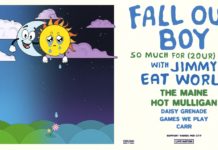By Mitch Rice
Electronic music is increasingly viewed as a diverse and well-developed genre of music. But even as recently as ten years ago, many music publications and executives were still a little cold to the emerging style of sound—and it had been that way since the ‘first’ techno and house samples were appearing in Detroit and Chicago in the 1980s.
But major strides have helped the industry grow, including ceremonies like the Grammy’s adding an electronic music award category. It’s just one signal that the genre is gaining mainstream appreciation and recognition. Another key indicator is the presence of games that include electronic music—and even those that focus on it.
For example, games like Rock Band and Guitar Hero once let players step into the shoes of rockers and musicians. However, other projects like Fuser are now taking gamers into the shoes of DJs as they perform and mix before massive crowds. Even in shorter-form games, electronic music is an important theme.
For example, games such as Jammin’ Jars include electronic background themes and a familiar DJ setup. Players spin the reel like in any slot game, which triggers different songs and dances. The symbols might be fruit, harkening back to the early days of slots, but the game’s soundtrack and visuals are all incredibly modern—and geared toward electronic music fans.
But if you’re new to this genre, you might still harbor a few misconceptions about what electronic music is, how it’s created, and how it’s performed. Let’s dive in by debunking some of the most problematic and longstanding myths tacked on to this genre.
Myth #1: Producing Electronic Music Requires No Skill
In reality, producing and creating electronic music requires quite a bit of musical education. Some of the best artists today have varied backgrounds playing other instruments. The piano is widely considered the most important because of its range of keys. Nils Frahm, for example, is famous for mixing classical and electronic music.
He’s known for mixing up to 21 different instrumental tools while performing live. These include drum machines like the Vermona DRM1, a melodeum, and guitar effects pedals, which he layers into a complex symphony.
Myth #2: Artists Rely Too Heavily on Sampling—Nothing is Original
For those who don’t know, sampling is incorporating a musical segment of another song as a key component in a new track. Many pop songs today rely on sampling—and electronic music also has a penchant for adapting older sounds. Still, sampling is a practice found in any musical genre, not just pop or electronic.
The idea that it replaces original creativity is a general misnomer. Sampling is present throughout music—and that’s okay. Let’s look at one example: Lay Bankz recently sampled a portion of Gwen Stefani’s song ‘Rich Girl’. Stefani’s song originally sampled a portion of a 1993 hit of the same name from artists Louchie Lou & Michie One… who had also borrowed the sample from none other than theatre production Fiddler on the Roof.
Myth #3: Electronic All Sounds the Same
The idea that electronic music, also known as electronic dance music or EDM, is an undecipherable mix of metallic sounds is simply incorrect. The genre is incredibly varied. Let’s dive into a few key examples.
First, we have outlier categories like IDM or intelligent dance music, which emerged in the UK in the 90s. This type of music is similar to Frahm’s, incorporating live instrumentals. We also have psytrance, which takes BPM to a new level. This style of music originated in Goa in the 90s, India, taking notes from traditional music. Techno came from Detroit in the 1980s, while house music originated a decade before in Chicago. Clearly, the genre spans the globe and has been a movement for decades.
Data and information are provided for informational purposes only, and are not intended for investment or other purposes.






